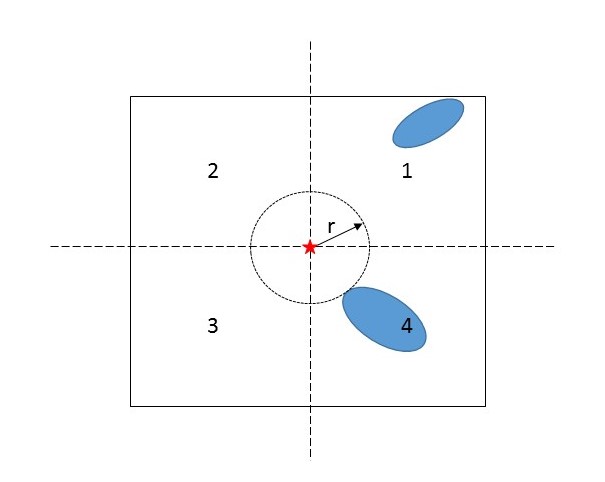-
happilylazy
posted in patch~ • read more@toxonic Thank you very much for your help. Indeed you helped me out a lot with your suggestions, especially to use [bonk~].
[bonk~] is really good, since it allows me to learn specific signal patters (i.e., in my case the hit with the hand on guitar strings), and it is able to detect it in the followup microphone coming from the guitar.
This hit detection got really messy using the [fiddle~] or [sigmund~] since there was a need to filter the power in specific frequency ranges and the amplitude of certain frequencies when the very percussive hit on the guitar strings happens. The problem is really complex if one wants to discern the guitar strings hit during a regular guitar playing with many events happening at the same time.
-
happilylazy
posted in patch~ • read moreGreetings.
I frequently use a live guitar in my PD patches, I route it through the mic input [adc~]. But now I am facing a problem, that you might help me with.I am interested in detecting in PD the moment of hitting the guitar strings with the hand, e.g. like using a hand to drum on the strings.
It is a very percussing sound, similar to a snare hit.I would like to detect this hit on the guitar strings in PD (coming through [adc~]) and use it as a simple bang trigger.
It would be easy to use the [fiddle~] attack output, but I don't want the trigger on any other guitar playing event (e.g., chords, notes ...) except on this percussive hit on the strings.Do you have any guidance on where to start to tackle this problem?
I don't have the slightest idea where to search for information regarding this topic. -
happilylazy
posted in pixel# • read moreWow, thanks a lot for these specific implementation. They look like exactly what I need.
I will try to use them and see how far I can get.But, I was still wondering if masking, or pixel analysis could solve my problem using pure GEM. Simply.
-
happilylazy
posted in pixel# • read moreGreetings, I have been using PD for audio for a number of years, but now I am boldly exploring the multimedia side of it. So I need a bit of help with my patch.
I am interested in using GEM with live camera to get the information on the moving object on the camera.
More specifically, are the moving objects (changes) present in four quadrants of the image, and what is the minimal distance from the center of the image 'r', as depicted in the image below.Using the pix_background it is easy to extract only the changes on an image and extract moving objects, but how do I detect in which quadrant of the image are these objects present, and what is the minimum distance from the center of the image?
In the case of the illustration, the objects are in the quadrant 1 & 4, and the minimum distance from the center is 'r'.

-
happilylazy
posted in technical issues • read moreWow, I actually got this working perfectly, for both of your answers. My external devices are reacting as expected, no glitches or problems.
@NoDSP: That was a good demonstration of how to implement it on low level, definitely useful to implement in patches.
@rjp9: A great patch, thank you. This is a clean robust solution. -
happilylazy
posted in technical issues • read moreI am trying to sync through MIDI my PD patches and some hardware equipment. The reason is that PD generates music and I jam to it with instruments connected to effects and samplers. The problem is that those samplers and effects are BMP dependent and need this information to perform.
How can I send MIDI clock messages from PD?
I can't seam to find a way of doing this with [midiout] and [noteout].
I am using Win7.p.s. I believe I found some hints that on linux using [midiout] it is possible to do this, but is this exclusive for linux or possible on Win too?
-
happilylazy
posted in technical issues • read moreTo make it more simple.
How to read a complete line of text till carriage return, regardless of symbols present?
I use [ read ecg_data.txt cr ( command to [ textfile ].
-
happilylazy
posted in technical issues • read moreI need to read a whole line of text (till carriage return) from a file. My text file looks like this
0.000000,16408.875931,106.666691,5251.990296
0.000488,16412.438424,106.666691,5251.990296
0.000977,16412.157174,106.666691,5251.990296
0.001465,16406.750934,106.666691,5251.990296
0.001953,16406.032186,106.666691,5251.990296
0.002441,16402.000943,106.666691,5251.990296
0.002930,16397.688451,106.666691,5251.990296Unfortunately, I can only read one atom at a time with textfile object and bang, as you can see in the attached patch.
I actually need the whole line, but PD stops after comma. How do I do this?
-
happilylazy
posted in pixel# • read moreI have a set of images i want to make into a stop animation.
I use [pix_image] and [pix_draw] to draw random images, from which I stream into [pix_record].[pix_image]
|
[pix_draw]
|
[pix_record]I am unable to produce video, I breaks after second image.
I was able to create video if using just a static image on Win 7 and up to 4 seconds mjpeg codec 3 video on Ubuntu. I tried pictures of same format, larger-smaller GEM window, all codecs on both systems, and nothing works.
Can you please help out, help me find some setting that would successfully produce video.
Here's my test patch, need ch_gemwin.pd and gemwin_control.pd
-
happilylazy
posted in patch~ • read moreI am having a problem on setting up timing of events in my PD patch.
What I need is to play "Sine osc~" for 5 seconds, and then a "Saw osc~" for 5 seconds, not playing them both at the same time but interchangeably.
It would be nice if I could repeat this for ever too.Can anyone help to make this in my patch?
I am stuck and it seams like a simple problem.
